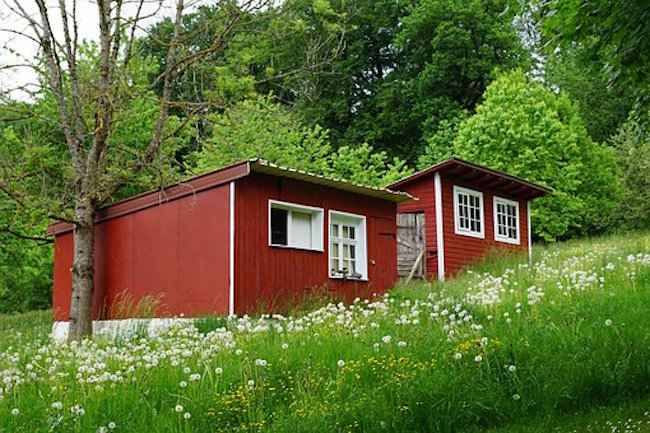Four Important Preparedness Lessons We Can Learn From the 1999 Vargas Tragedy By J. G. Martinez D. for The Organic Prepper
The Vargas Tragedy was a combination of landslides and floods that occurred on the Caribbean coast of Venezuela back in December 1999. It left behind a lot of missing, wounded, and death people still unknown to this day. It affected 8 states but because of the historical arrangement of a geographical combination of parameters, Vargas State had the most devastating effects. This state is part of the center of the economy in Venezuela. The international airport is there, and one of the main ports of the country, customs, and it is as well a tourism place for the entire capital city, with beaches and nice scenarios.
Warning: Graphic descriptions ahead. If you’re a sensitive person please be warned.
The Vargas Tragedy is still considered the worst natural disaster in Venezuela during the 20th century.
The non-official number of victims are calculated in thousands ranging from 10,000 to 50,000 dead. Of course, the official number is under 3000. Not surprising, indeed.
The lack of organization in the evacuation after the rain stopped did not allow proper tracking of people, something that could be done with just a few computers tied up in a local network and a spreadsheet. I was not in the city those days: I had traveled to my hometown in another state, far from the capital. However, plenty of my friends back then offered as volunteers, just like half of Caracas did, to assist in the assistance to the survivors and refugees.
One of the largest spectacles center, the Poliedro, a theater facility, was made available as a shelter for refugees, while some of them lived there even for years after the disaster because they had no place to go and demanded the government provided them with equipped housing. Go figure. A much-criticized figure was the forcing of some fancy hotels to accept the refugees. Many of them came from low-income population segments, and low education also. The first three or four months, while the payments were on time, they were more or less tolerated. After allowances dried up…the owners of the hotels, hostels, and other similar facilities that had to accept refugees could not ask for them to leave. It was a huge mess. Rooms in an awful state of hygiene, pipes in the bathrooms clogged on purpose as revenge, beds, and mattresses destroyed, all of this.
The disaster made me start thinking about preparedness.
This disaster was a major breakthrough in the regular life of the country. And for me, something that made me think very carefully about my options, once the moment would come. Never had thought too much about preparing myself for something like that. I was much younger and inexperienced, though. Years later I would realize how deep the impact on the country was, of having suddenly 200,000 people facing their loss of homes, jobs, family, and everything they could have owned, to face forced relocation in other parts of the country.
The worst part is, this had happened before. There was a precedent of these landslides, and this devastating effect perhaps could be avoided, should our successive governments had not been a 3rd world crappy mess, but the one we deserve.
In 1951 a similar meteorological phenomenon occurred in the same area, and almost the same month: February 15 to 17.
It destroyed plenty of homes and the rivers Osorio and Caracas went wild.
The heavy precipitations were calculated in about 530 mm of water in just 60 h. It was not a disaster limited to the coastal line. In the rest of the countries the monsoon-like rains took their tool also. This kind of events was one of the things that made me change my small, cheap, and practical 4 doors, pampered-since-brand-new Japanese sedan, by an SUV with full-frame…but with the crappiest and poorest designed engine by the Japanese in the last century.
The tragedy was not something that you could name a first-timer. Back then in 1798, there is documentation about a similar 60 hours of rain generating a similar condition. The researcher and scientist Alexander von Humboldt was there one year later and could analyze the phenomena. And it was something worth to do so, because of the huge volume of water, able to drag stones 9 meters in diameter (the size of a bus) downhill, the destruction of this was simply awesome. And in the middle of the road to the sea of this volume of sediments, mud, water, logs, and everything…was an entire town. They built it in the middle of the flat area of the adjacencies, and the mud waves just swiped everything. Once the landslide gets into the town, the debris accumulates, and it loses speed…but having gained inertial mass, the rest was just basic physics. It was like ten dozens of bulldozers. Just check the pictures. I have to admit, in favor of the local authorities of that time, that the situation was not something too easy to predict. Nor they, nor anyone had any idea that high on the mountains, natural dams were forming, and that the water had permeated several meters of ground, making them absolutely unstable and prone to the massive landslides.
Three different agencies requested the early evacuation of 200,000 persons. This was rejected by the central government, represented by Uncle Hugo. Today, the number of civilian casualties remaining buried under 4-5 meters of dirt remains unknown. The calculations go as much as 30,000 people. A big part of the obstacle for this was the elections being carried on those days.
The reason for the refusing of the approval for the evacuation procedure perhaps was because of the close elections to approve the actual Constitution. Talking about God´s signals…
This could be harmful to the communist party to lose the legal base to do what they have done until now. Anyway, if one of the responsible could clarify this, is burning now in some place. You know what I mean.
Chaos followed and the government wasn’t much help.
Looting, raping, murdering and sacking sprouted up, everywhere. This was a major cause that obliged the Army to instate martial law (and of course executions of infractors). Just as it is usual to happen in these situations, those were confusing days. Witness told about having to sleep in the ruins of some buildings, while the soldiers with night vision scoped ARs (AKs factory was not “trendy” those days) hunted the predators stupid enough to roam around in the middle of the night with a knife, machete or a handgun. He told me that the worst part was the thirst and the smell of the dead bodies all over the place. With the tropical heat, they had to breathe with a cloth in their mouths. There was not any nearby source of drinking water, other than the few supplies that soldiers and rescuers could provide. They told the survivors to keep hidden before sunset, and well-hidden because anyone moving after that would be shot and killed. Eventually, they were evacuated, but those 5 or 6 days were a nightmare. The landslides swiped the most prosperous and wealthy areas of the city, leaving the poor barrios in the hills untouched…the places where the bad guys live. After the disaster, these predators just had to go, armed to the teeth…and make their own personal paradise in the middle of that hell, with body parts scattered all around.
Brutal stories shared to me by people who actually WAS there, too crude to write them here. But on the other side, noble ones too, like the homeless drunk guy who found an old machete, sharpened it with a stone and climbed over the palm trees, to harvest coconuts for the thirsty people he could find.
Testimonies like this one: Angeline Mendoza and her four daughters shared a large, formerly luxury house with other 20 people. Four families. Each family occupying a room. “We have no running water, sewers and surrounded by sewage waste. We have power because we stole it from the power line. We have no other place to go” she said.
No wonder a rescuer I met some time afterward told me that he was trained in first aids and finished picking up body parts scattered on the beach. 10 years later he still had nightmares. With a sad smile, he told that hasn’t been able to see the beach the same way. Can’t blame him though.
There are four lessons we can learn from the Vargas Tragedy.
There are some lessons we can learn from this, my dear fellows.
One: governments usually don’t accept the reality of the disaster after much has passed.
Two: once they realize how much they screwed up, they will try to minimize the event.
Three: their reactions usually will be slow and limited in their scope. There will be no high-rank officers involved until the S starts to reach far enough.
Four: nerves can make you take very bad decisions. Even worst, they can paralyze you and IMPEDING you to make any decision or any move. That could get you all killed. I remember a helicopter pilot asking the US for more choppers to evacuate people faster. The guy was certainly and recognizably hysterical.
To be continued…
What do you think?
How do you prepare for natural disasters? Do you think the government in your country responds well to these events? Please share your thoughts in the comments.
About Jose
Jose is an upper middle class professional. He is a former worker of the oil state company with a Bachelor’s degree from one of the best national Universities. He has a small 4 members family, plus two cats and a dog. An old but in good shape SUV, a good 150 square meters house in a nice neighborhood, in a small but (formerly) prosperous city with two middle size malls. Jose is a prepper and shares his eyewitness accounts and survival stories from the collapse of his beloved Venezuela. Thanks to your help Jose has gotten his family out of Venezuela. They are currently setting up a new life in another country. Follow Jose on YouTube and gain access to his exclusive content on Patreon. Donations: paypal.me/JoseM151




